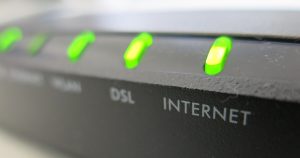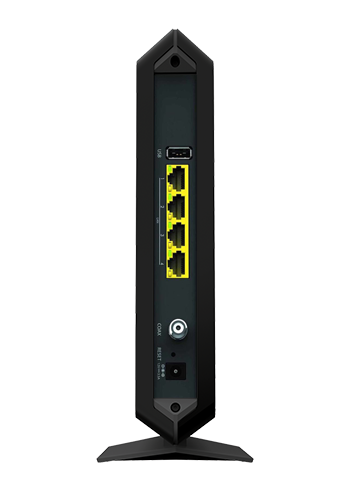That said, it’s important to buy the right modem for your internet service. So before you click “Check out,” here’s what you should know. You’ll need a DOCSIS cable modem for any cable internet provider like Xfinity, Cox, or Spectrum, and a DSL modem for any provider that serves up a DSL connection, like CenturyLink, AT&T, and Windstream. (Note that AT&T no longer sells new DSL internet plans.) For fiber internet, you’ll need what’s called an Optical Network Terminal (ONT), and it’s probably best to get this from your ISP.
Cable internet: DOCSIS cable modem DSL internet: DSL modem Fiber internet: Optical Network Terminal (ONT)
That said, if your satellite internet is giving you trouble, restarting your modem or calling your ISP to request a new one could solve the issue.
Comcast Xfinity Cox Mediacom (PDF) Sparklight (formerly Cable One) Spectrum Astound Broadband, Powered by RCN
You should also consider that buying your own modem is a larger up-front cost, but it could save you a lot of money in the long run. Equipment rental fees for internet providers can total up to $100 to $200 a year, depending on your provider. So after two years, you’ve either saved a considerable amount of money or you’ve broke even. But even if your ISP throws in a modem for free, you may end up with a better deal if you buy your own. Some ISP-provided equipment is notoriously lackluster, and paying for better quality is likely worth it. There’s no sense in paying your internet company for 500 Mbps speeds when your modem can support only 100 Mbps speeds. That means you won’t see speeds above 100 Mbps—and in essence, you’re paying for nothing. At the same time, you don’t need to dig hundreds of dollars out of your wallet for a modem that supports gig speeds if you’re paying for only 100 Mbps. Again, you won’t see speeds much higher than 100 Mbps. If you’re not sure what internet speed you’re paying for right now, you can run a quick internet speed test. The speed test will tell you your current download and upload speeds. Keep in mind that these speeds likely fluctuate throughout the day and week, so you can run multiple speed tests and average them to get a more accurate idea of your internet speed. DOCSIS 3.1 is the newest protocol, and it lets your modem handle gig (1,000 Mbps) internet speeds. DOCSIS 3.1 modems tend to cost more, so if you’re not paying for gig speeds, you should be fine with DOCSIS 3.0. Channel bonding is usually written out as two numbers, such as 24x8 or 8x4. The first number tells you how many channels are available to download data, while the second number tells you how many channels there are for uploading. For example, a modem with 24x8 channel bonding has 24 channels ready to download data and 8 channels available to upload data. If you guessed that more channels means faster downloads and uploads, you’re right. Of course, you’ll pay more money to get more channels. But, if you’re paying for faster internet speeds, you’ll want to make sure your new cable modem has enough channels so your speeds (and money) don’t go to waste. There are several different generations of DSL technology, so choosing a DSL modem that supports the specific technology your ISP uses is important. Here’s a quick look at some of the different generations of DSL technology and the speeds each one supports.
ADSL: Up to 8 Mbps download speeds, 500 Kbps upload speeds ADSL2+: Up to 24 Mbps download speeds, 1.4 Mbps upload speeds VDSL2: Up to 50 Mbps download speeds, 15 Mbps upload speeds GPON: Up to 2.4 Gbps download speeds, 1.2 Gbps upload speeds
Make sure to check your new modem for a phone jack and Ethernet jack—at least one each. These can look similar, so modem makers often label them to show you the difference like on the CenturyLink Zyxel C1100Z modem below. Sometimes modem-router combos are a little more expensive than a standalone modem or router, but keep in mind you’re still technically purchasing a piece of equipment that serves two different functions. If you do choose a modem-router combo, check out our guide on what to look for in a router for some extra tips. If you’re running into trouble with your modem, check out our internet setup guide or visit your modem’s support site. Here are support portals for some common modem brands:
ARRISMotorolaNETGEARTP-LinkZyxel
If you have an older modem, and you’re noticing it needs to be reset frequently, your internet connection is super slow, or your modem makes a lot of noise, it may be time to upgrade your router to a newer model.


